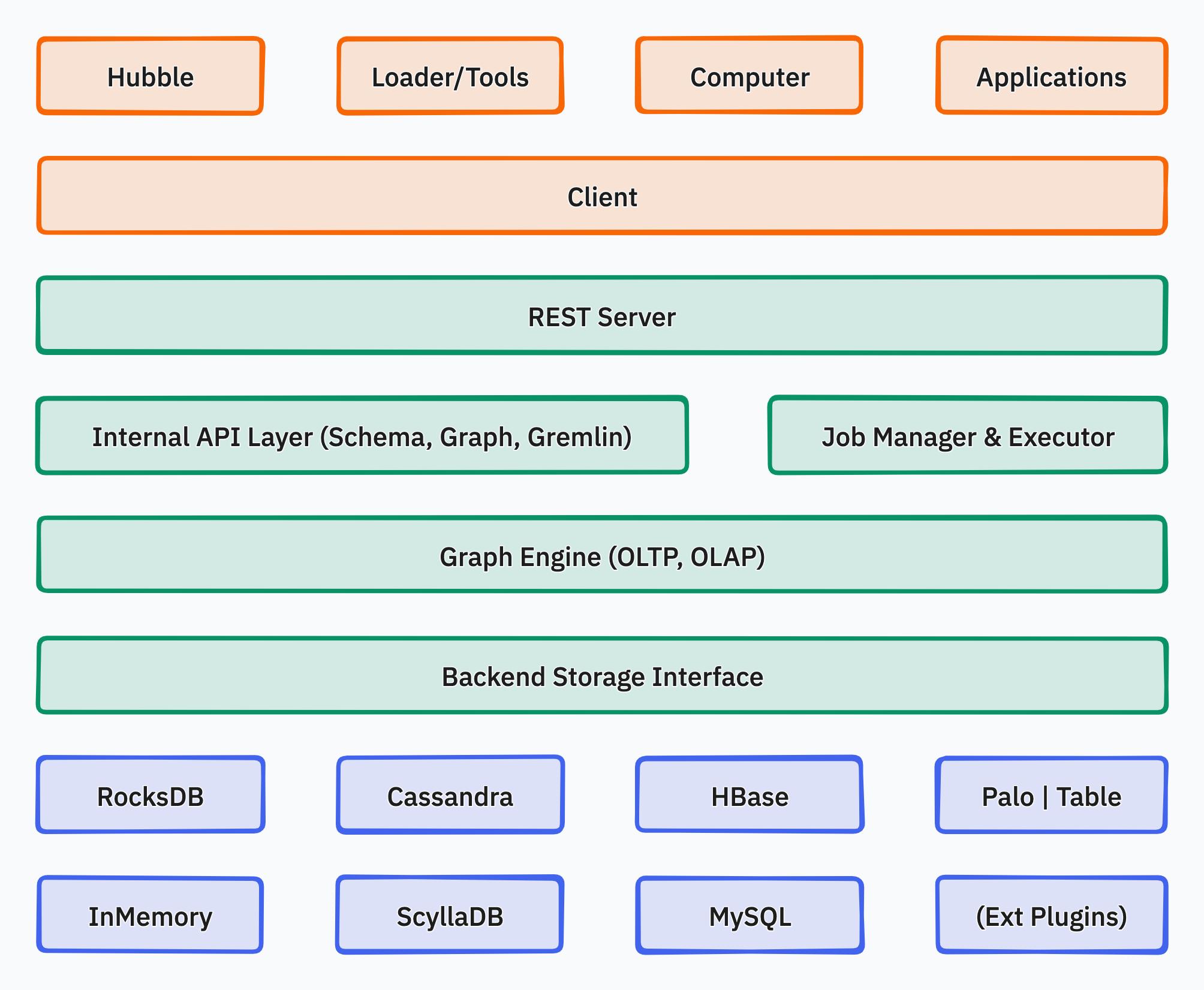HugeGraph Architecture Overview
1 Overview
As a general-purpose graph database product, HugeGraph needs to possess basic graph database functionality. HugeGraph supports two types of graph computation: OLTP and OLAP. For OLTP, it implements the Apache TinkerPop3 framework and supports the Gremlin and Cypher query languages. It comes with a complete application toolchain and provides a plugin-based backend storage driver framework.
Below is the overall architecture diagram of HugeGraph:

HugeGraph consists of three layers of functionality: the application layer, the graph engine layer, and the storage layer.
- Application Layer:
- Hubble: An all-in-one visual analytics platform that covers the entire process of data modeling, rapid data import, online and offline analysis of data, and unified management of graphs. It provides a guided workflow for operating graph applications.
- Loader: A data import component that can transform data from various sources into vertices and edges and bulk import them into the graph database.
- Tools: Command-line tools for deploying, managing, and backing up/restoring data in HugeGraph.
- Computer: A distributed graph processing system (OLAP) that implements Pregel. It can run on Kubernetes.
- Client: HugeGraph client written in Java. Users can use the client to operate HugeGraph using Java code. Support for other languages such as Python, Go, and C++ may be provided in the future.
- Graph Engine Layer:
- REST Server: Provides a RESTful API for querying graph/schema information, supports the Gremlin and Cypher query languages, and offers APIs for service monitoring and operations.
- Graph Engine: Supports both OLTP and OLAP graph computation types, with OLTP implementing the Apache TinkerPop3 framework.
- Backend Interface: Implements the storage of graph data to the backend.
- Storage Layer:
- Storage Backend: Supports multiple built-in storage backends (RocksDB/MySQL/HBase/…) and allows users to extend custom backends without modifying the existing source code.
Last modified June 25, 2023: doc: update outdated architectural doc (#274) (bf55c142)